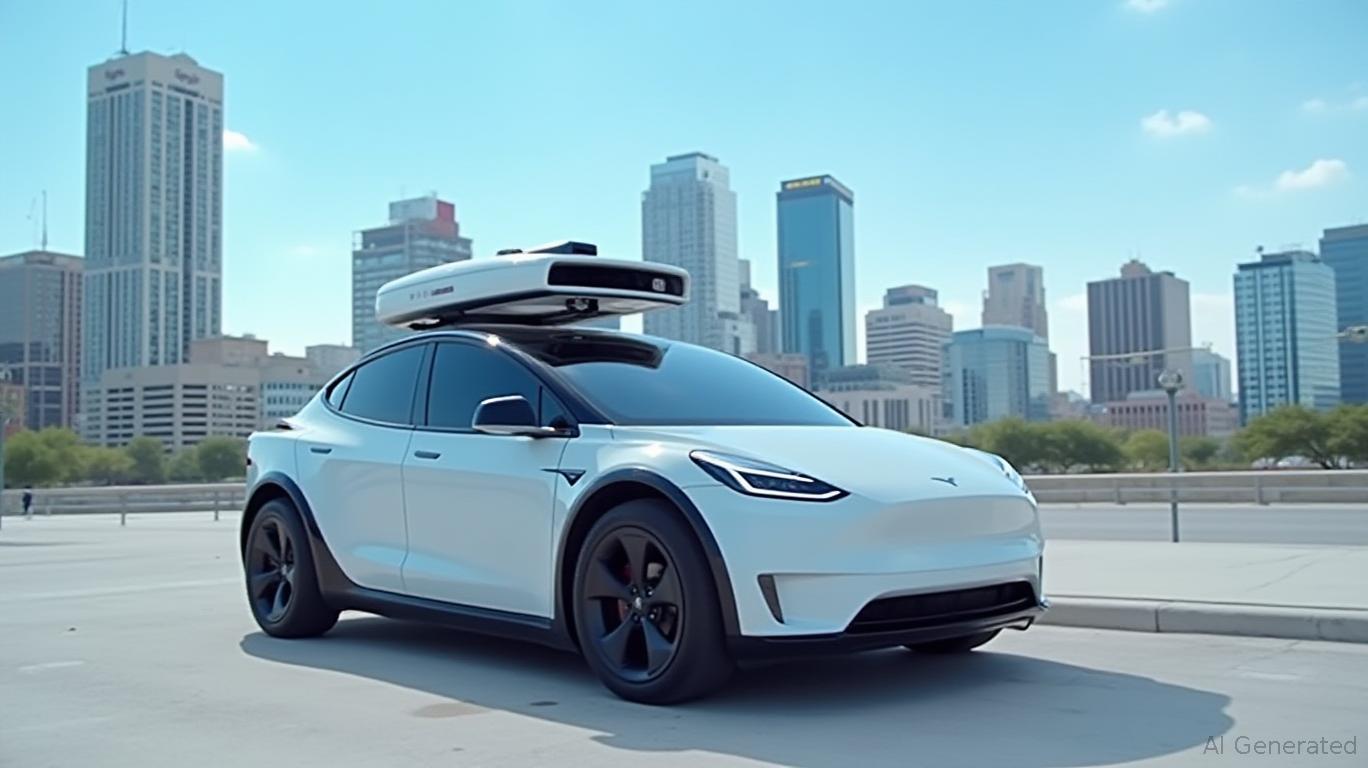Tesla's Robotaxi Gambit: Regulatory Agility and Disruptive Pricing Position It for Autonomous Dominance
The launch of Tesla's Robotaxi service in Austin, Texas, on June 22, 2025, marks a pivotal moment in the autonomous vehicle (AV) race. By deploying its vision-only Full Self-Driving (FSD) system in a regulated, revenue-generating trial,
has positioned itself to outmaneuver lidar-dependent rivals like Waymo. The $4.20 flat-rate pricing and Texas's permissive regulatory environment suggest a deliberate strategy to dominate the autonomous mobility market. However, risks linger—from technical scalability to shifting regulations—that could disrupt this trajectory.
Regulatory Agility: Tesla's Texas Playbook
Tesla's launch in Texas leverages a regulatory environment uniquely aligned with its minimalist approach. While states like California and New York impose stringent requirements for AV testing and deployment, Texas's newly enacted law (effective September 2025) grants operators like Tesla flexibility. The company secured a state permit by attesting to Level 4 autonomy—a lower bar than the rigorous testing mandates faced by Waymo in other jurisdictions.
This strategic move contrasts sharply with Waymo's struggles. Waymo's lidar-heavy systems, while technically advanced, face costly compliance hurdles in regions like Japan and Germany, where regulators demand granular safety data and real-time emergency protocols. Tesla's vision-only system, by contrast, avoids the $10,000–$100,000 per-vehicle cost of lidar, enabling a $0.12-per-km operational cost—99% cheaper than Waymo's $8.75-per-km model.
Tesla's stock surged 10% on news of its Robotaxi launch, reflecting investor confidence in its regulatory edge. Morningstar analysts estimate Tesla's autonomous services could generate $50 billion annually by 2027, dwarfing Waymo's $1.5 billion revenue in 2024.
Market Penetration: Disruptive Pricing and Influencer Momentum
Tesla's $4.20 flat fee—a nod to its “42” cultural references—serves as both a marketing hook and a pricing declaration. The trial's influencer-driven rollout, targeting tech-savvy users, mirrors the company's early EV adoption strategy. By seeding the service through social media and Austin's tech community, Tesla aims to build organic demand before scaling.
This contrasts with Waymo's cautious, partnership-heavy approach. Waymo's 27% market share in San Francisco relies on alliances with Jaguar and Chrysler, but its $6–11 premium over competitors limits mass appeal. Tesla's ability to undercut rivals while leveraging its existing 3.6 billion miles of real-world FSD data creates a moat no lidar firm can easily breach.
Risks: Technical and Regulatory Uncertainties
Despite its advantages, Tesla faces two critical risks. First, its vision-only system's reliability in adverse conditions—such as heavy rain or snow—remains unproven at scale. The Dawn Project's demonstration of a Model Y failing to stop for a school bus underscores the system's vulnerabilities. Second, regulatory scrutiny looms. The National Highway Traffic Safety Administration (NHTSA) has already questioned Tesla's teleoperation protocols, and a single high-profile accident during the trial could trigger fines or delayed approvals.
Waymo's path, while costlier, offers a counterweight. Its lidar-based systems excel in edge cases, and its partnerships with Toyota and Chrysler provide geographic reach Tesla lacks. Yet Waymo's slow expansion—3,500 vehicles by 2026 versus Tesla's potential global rollout—highlights the cost disadvantage of its sensor-heavy approach.
Investment Thesis: Buy Tesla for Long-Term Dominance
Tesla's Robotaxi launch is a masterstroke of regulatory arbitrage and cost discipline. Its $4.20 pricing signals an intent to commoditize autonomous mobility, much like its EVs disrupted gasoline-powered cars. While technical and regulatory risks exist, the company's data moat, Texas's leniency, and first-mover advantage create a defensible lead.
Investors should view dips in Tesla's stock as buying opportunities. The company's valuation may face short-term volatility due to safety concerns, but its path to $50 billion in autonomous revenue by 2027 remains compelling. For long-term portfolios seeking exposure to the AV revolution, Tesla's blend of innovation and execution makes it a core holding.
In the autonomous mobility race, Tesla has just pulled ahead—regulatory tailwinds and disruptive pricing are its rocket boosters. The question now is whether the world will follow.
Final Note: Monitor NHTSA's response to Tesla's teleoperation protocols and the scalability of its vision system in winter conditions. Both could redefine the stock's trajectory in 2026.

Comments
No comments yet